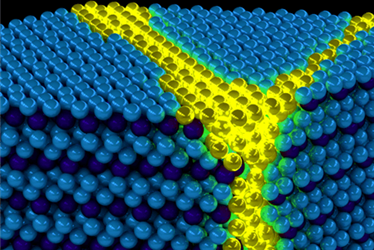Researchers Prove Existence Of Excitonium, A New Form Of Matter
By Jof Enriquez,
Follow me on Twitter @jofenriq

Scientists using a newly developed spectroscopic technique have finally proven the existence of excitonium, a new form of matter first theorized almost half a century ago.
Researchers from the University of Illinois at Urbana-Champaign, University of California, Berkeley, and University of Amsterdam, report being the first to observe a soft plasmon phase that is a precursor to exciton condensation in a three-dimensional solid, and proof of the existence of excitonium.
Until recently, scientists did not have the experimental tools needed to differentiate whether they were detecting excitonium (a condensate made up of excitons), or other phases or forms of matter. What enabled the U of I team to obtain definitive evidence was the newly developed technique of momentum-resolved electron energy loss spectroscopy (M-EELS).
Considered more sensitive to valence band excitations than inelastic x-ray or neutron scattering techniques, M-EELS was used by the researchers to probe collective excitons – bound states of electrons and holes in solids – condensing in the transition metal dichalcogenide semimetal titanium diselenide (1T-TiSe2).
In experiments at the Frederick Seitz Materials Research Laboratory at U of I, the team studied crystals doped with 1T-TiSe2, and were able to reproduce similar results five times on different cleaved crystals.
“Near the phase-transition temperature (190 kelvin), the energy of the electronic mode fell to zero at nonzero momentum, indicating dynamical slowing of plasma fluctuations and crystallization of the valence electrons into an exciton condensate,” the authors report in the December 8, 2017 issue of the journal Science.
“This result is of cosmic significance,” says U of I Professor of Physics Peter Abbamonte. “Ever since the term ‘excitonium’ was coined in the 1960s by Harvard theoretical physicist Bert Halperin, physicists have sought to demonstrate its existence. Theorists have debated whether it would be an insulator, a perfect conductor, or a superfluid — with some convincing arguments on all sides. Since the 1970s, many experimentalists have published evidence of the existence of excitonium, but their findings weren’t definitive proof and could equally have been explained by a conventional structural phase transition.”
Abbamonte says it was "total serendipity" to have discovered excitonium, reports Newsweek. He and his team were originally studying high-temperature superconductors, when they realized a few years ago that they were in the cusp of proving a decades-old theory in quantum physics.
The researchers say their discovery “holds great promise for unlocking further quantum mechanical mysteries” but, at this time, “possible technological applications of excitonium are purely speculative.” It will take some time for scientists to fully understand the properties of excitonium, and whether it behaves more like an insulator, or a superfluid, or something else.
“The most important thing is that it exists,” Abbamonte told Newsweek. “It’s one of those things that just ought to be there, you know? And it didn’t make sense that it wasn’t.”
